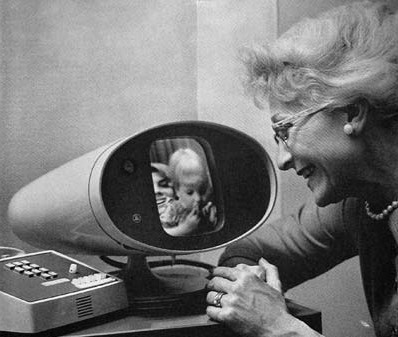| |
Why Video?
Communication is largely visual. In a normal face-to-face conversation, the actual words that are spoken provide around 7% of the information that is conveyed during the exchange. Voice pitch and tonal inflections account for another 42%. Visual communication - facial expressions, body language, eye contact - accounts for over 50% of the available information that is conveyed.* A perfect example of this can be seen when communicating with a young child - imagine a conversation with a baby or toddler without visual communication. |
|
 |
This brings up a very important part - costly decisions, monetary, organizational, instructional and in the case of medical and emergency services - life and death decisions are made based on less than half of the information that is available from the conversation.
The look of confusion from the question that goes unasked, the exhausted look on the faces of emergency responders, the rolling of the eyes, the confident appearance of understanding and agreement - all of these are wasted and un-noticed without a way to see them happening.

Why Now?
The IP Revolution
 |
|
In the 1964 World's Fair in New York, video conferencing made a grand debut, but was more of a futuristic novelty than a practical tool for everyday use. In the 1980's, the commercial market began utilizing video, but the first systems were still largely out-of-reach for most businesses at a whopping $250,000 and $1,000 per hour for telecommunications charges! The 1990's and early 2000's saw huge drops in the costs of video, but the ever-present cost of expensive dedicated line charges still made it the domain of large corporations and high-level government. |
|
In 1996, a set of network protocol standards known as H.323 paved the way for the video systems that we know today. H.323 made it possible to use the public internet as a means to connect and conduct video conferencing. Now, existing networks that businesses and individuals already have in place providing high-speed internet can be multi-purposed to provide business grade, standards-based and secure video communications from an office, home, classroom, board room - anywhere that a high-speed internet connection is available - and without the recurring stand-alone charges for the dedicated network that was previously required.
Soaring Fuel Cost
|
|
At the same time that the cost of standards-based video conferencing equipment has been coming down, fuel costs have been steadily going up. As we all well know, fuel cost impacts the cost of everything else. Travel budgets get chopped, training is usually among the first things to go, and expenses are cut across the board. Video provides a viable and cost effective way to replace many of these travel expenses without compromising program integrity. |
Economic Conditions
 |
Today’s economy has shown us several very important factors in remaining viable during the lean times. First of all - adapt and be willing to change for the current conditions that you face. Learn to reduce costs - determine what you actually need and trim the fat so to speak. Also, we tend to play better with others if we want to survive - collaboration and finding cooperative synergies with other companies is key to maintaining a competitive edge. and lastly, learn to manage your stress, and don't become paralyzed by the challenges that face you. |
|
All of these things are addressed as part of a well-planned and utilized visual communications plan. Leasing and operating expenses have become available allowing organizations to constantly adapt to new technology. Travel expenses are greatly reduced and the cost of the video solution is off-set by travel savings. Collaboration with the right partner or supplier is as close as your office, whether that perfect resource happens to be in Hong Kong or down the street. Managing stress by striking a better work/life balance has never been more of a reality - be at a meeting in Dallas, speak with a supplier in Germany, then make the PTA meeting and still make it to your child's baseball game.
A Push For Green
|
|
With the focus on reducing our environmental impact, and the need for businesses and government to reduce their carbon footprint, there is no single method that comes close to utilizing visual communications. Through travel reduction and elimination or supplementation of commutes through telework, everyone becomes part of the solution. |
With visual communications in your tool bag, productivity is at it's peak, costs are reduced, corporate responsibilty is practiced and lives are better balanced between work and play. Can you SEE where we're coming from? Welcome to tomorrow.

|
|

![]()
![]()









